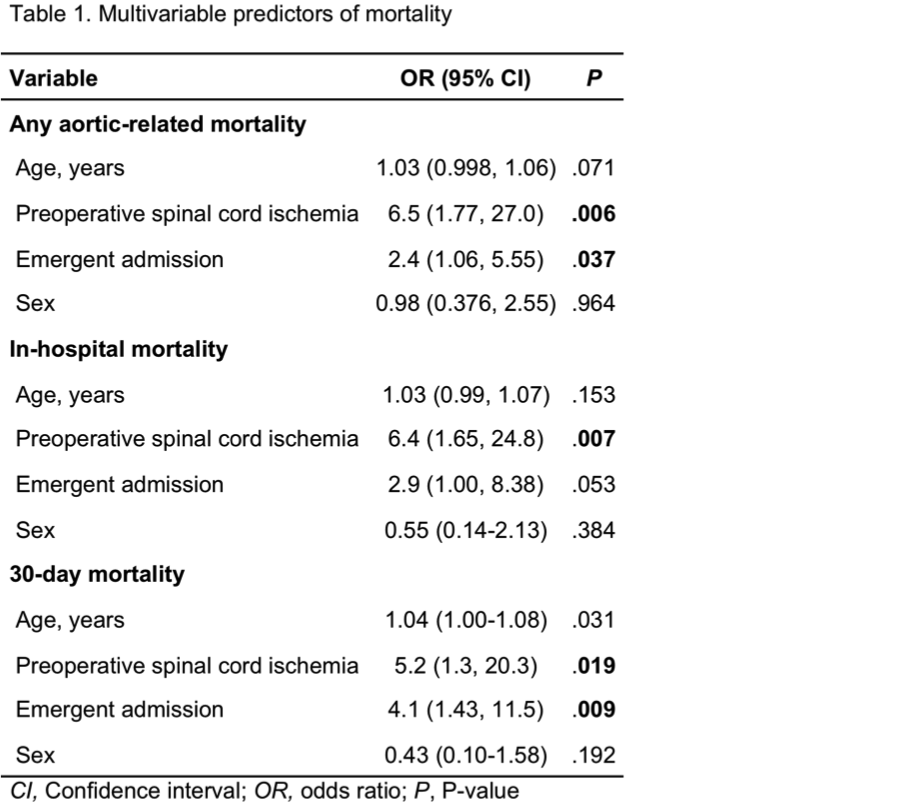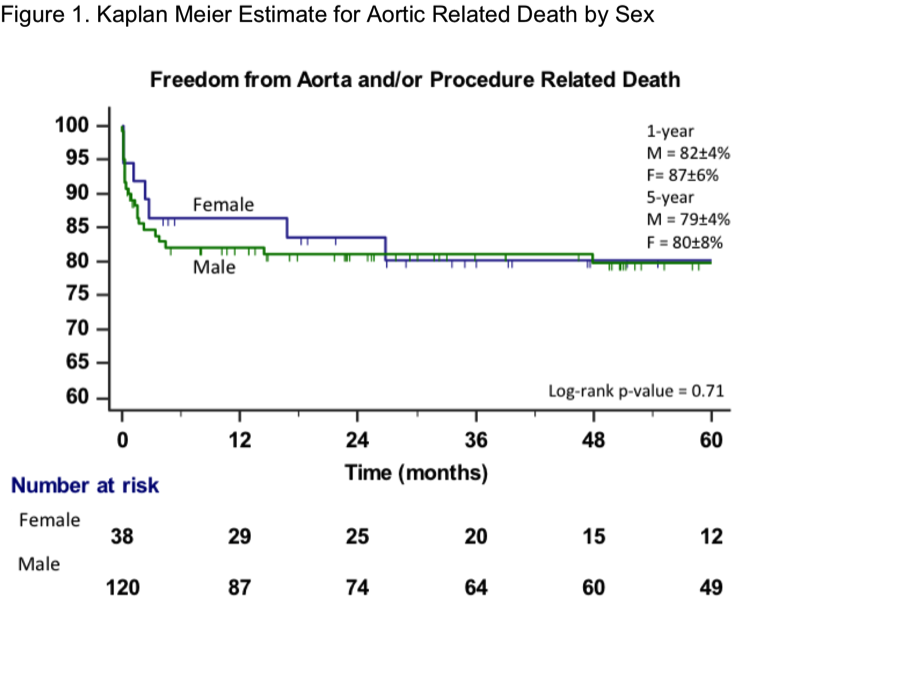Sex Differences In Patients Undergoing Thoracic Endovascular Aortic Repair For Acute Complicated Type B Dissection
Amanda C. Filiberto, MD, Eric Y. Pruitt, MD, Sara Hensley, MD, Salvatore T. Scali, MD, Martin R. Back, MD, Dean J. Arnaoutakis, MD, MBA, Thomas S. Huber, MD, PhD, Gilbert R. Upchurch, Jr., MD.
University of Florida, Gainesville, FL, USA.
Objective: Previous reports have highlighted differences in outcomes between men and women who undergo treatment of elective and non-elective degenerative aneurysm. However, there is a paucity of data describing sex-based differences surrounding thoracic endovascular aortic repair (TEVAR) of acute complicated type B aortic dissection. The objective of this study was to assess sex-based differences in demographics, clinical presentation, time to repair, and outcomes in patients undergoing TEVAR for acute complicated type B dissection. Methods: Patients undergoing TEVAR (n=159) for acute complicated type B dissection from a single academic medical center were analyzed. Demographics, clinical presentation, time to repair and outcomes were stratified by sex (females, n= 38, 24%). The primary end-point was 30-day mortality. Secondary end-points included complications, re-intervention and survival. Logistic regression was used for risk-adjusted comparisons and life-table methodology estimated freedom from end-points. Results: There were no sex differences in age, prevalence of comorbidities, or clinical presentation for patients undergoing TEVAR of acute complicated type B dissection. Time from symptom onset/admission to repair was significantly longer for female patients (female, median 3.5 days [IQR 1,10] vs. male, 1.0 day [IQR 1, 3]); however, there were no significant differences in unadjusted aortic/procedure related death, in-hospital death, or 30-day mortality. When adjusting for sex, age, preoperative spinal cord ischemia and emergent admission, sex did not significantly impact outcomes (Table). One and 5-year freedom from aorta-related mortality was 82±4% and 79±4% for males vs. 87±6% and 80±8% for females, respectively (Figure). Conclusions: Compared to male patients, female subjects with acute complicated type B dissection undergoing TEVAR had no difference in clinical presentation or comorbidities. However, female patients underwent repair later compared with male patients. Despite these differences, there were no sex-based differences in morbidity or mortality. Age, preoperative spinal cord ischemia and emergent admission are more important predictors of mortality than sex. 

Back to 2021 Karmody Posters
